Kites quietly consolidate
It is now six years since the first pair of red kites nested in the county since the 1850s.
They chose Kedleston Park near Derby, a site which just happens to be my local patch.
Keeping a daily eye on the pair, which eventually raised a single chick, proved to be a memorable experience.
Wild Update - July 2024
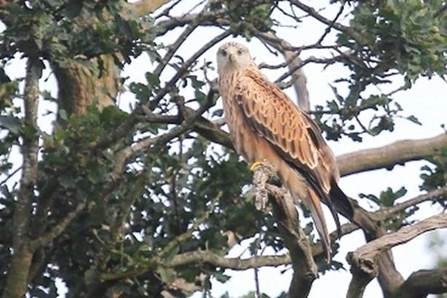
The very first kite chick raised in the county since the 1850's. - David Naylor
Since then the pair moved nest site within the park and after lockdown ended, moved further away to quieter woodlands nearby.
During lockdown, the park was closed and evidence of successful breeding there was only achieved after the young had fledged.
Kites have a habit of decorating their nests with all manner of strange things and so I wasn’t surprised to find this motley collection of rags strewn about under the nest tree, presumably blown out of the nest by autumn gales.
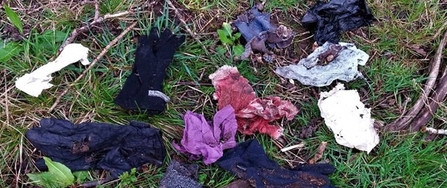
Kite rags - NB. Elsewhere children's toys and underwear have been snatched from washing lines! - NB
Now there are at least ten pairs of kites nesting in the county and probably more since they can be very secretive while breeding.
Exciting purple news!
The first sighting of a purple emperor butterfly in the county was made earlier this month at Bretby, a village in the deep south of the county.
These awe inspiring insects have been resident just to the south of Derbyshire for a few years so the hope that one or more would move further north seemed likely.

Purple emperor, Northants 2010. - NB
In 2010, I visited a wood in Northants where this butterfly breeds and my account of that visit was included in my ‘Wildlife Diary’ at the time.
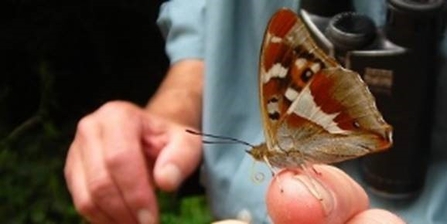
A purple emperor on my hand, attracted no doubt by my salty sweat!
Recently a joint project between Ken Orpe of Butterfly Conservation and South Derbyshire District Council has seen 600 sallow whips planted at over 45 sites, mainly in the south of the county, sallow being the plant on which the butterfly’s caterpillars feed.
Let’s hope advancing adults find them and lay their eggs on them too.
Berry eating time already
The honeysuckle that flowers very early in my garden now has pink berries and already both blackbirds and a blackcap have homed in on them.
By the end of August, the berries on the elderberry bush opposite our kitchen window will have ripened and I will be keeping a very close, early mornings watch to see what turns up to feed on them – usually four species of warbler for a start!
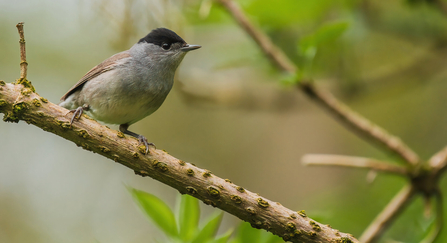
Blackcap - TJELLIS
Quite a hobby
Unlike buzzards and red kites even, which are easy to see if you are out on a walk, hobbies are not!
These small charismatic falcons are doing really well, their numbers having increased considerably over the last 20 years.
However, breeding mostly in unspectacular farmland rarely visited by birders, their nest sites are really hard to find.
Ant Messenger has made a remarkable 30 year study of these birds in the county, spending thousands of hours in the field trying to find nests so he can later ring the young and record their breeding success.
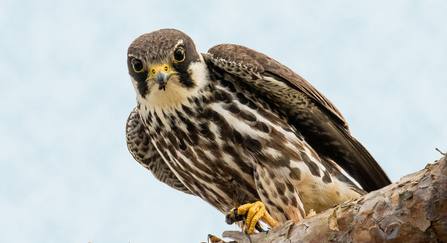
Hobby - Andy Morffew
Ant is a joint author with Cotswold-based author Richard Sale of a monograph on the species published a few years ago.
I’ve been lucky enough to accompany Ant several times and to learn from his brilliant fieldcraft.
Hobbies are summer visitors, spending eight months of the year down in Africa feeding on termites and the like.
In the UK they feed not only on small birds but also on insects including dragonflies.
They usually take over disused crow nests. Like their cliff-nesting relatives the peregrines, they are far too ‘upper crust’ to build a nest themselves!
Come August, when juveniles have mostly fledged, hobbies spend time at wetlands catching dragonflies and this provides the best opportunity of seeing them.
Try Willington Wetlands and Carr Vale, two hotspots for hobbies in August but you’ll need a hot sunny day to get their dragonfly prey on the wing!
Robin’s pin cushions
Dog roses are common and widespread in the county and occasionally you may spot a strange looking, spiky reddish structure among the leaves.
Here's one I saw the other day:
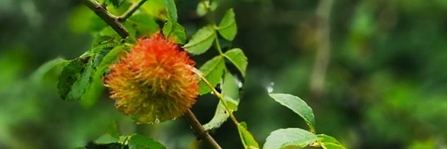
Robin's pincushion on dog rose - NB
This is a bedeguar gall, also called a robin’s pin cushion, formed by the rose in response to the eggs of a tiny parasitic wasp.
Wayside flowers
Travel along country roads at this time of the year and you’ll see a range of flowers including the creamy white ones of meadowsweet, the pink ones of great hairy willowherb, the mauve flower spikes of rosebay willowherb and the blue of meadow cranesbill among others.

Meadow cranesbill and meadowsweet - NB
Where are they?
Last week, walking into Derby through a commercial suburb while my car was being serviced, I must have passed at least twenty large Buddleias growing on brownfield sites by the footpath.
I searched each one for insects but saw no bees, hoverflies and just one single butterfly, a gatekeeper.
This shows just how weather-dependent insects are. Hopefully they will bounce back next year as they have done after previous poor summers.
But as weather patterns become ever more unpredictable, will next summer be similar to this, or scorching hot causing further declines?
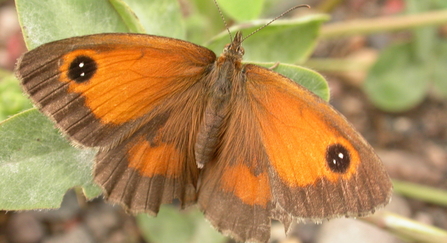
Gatekeeper - Philip Precey
